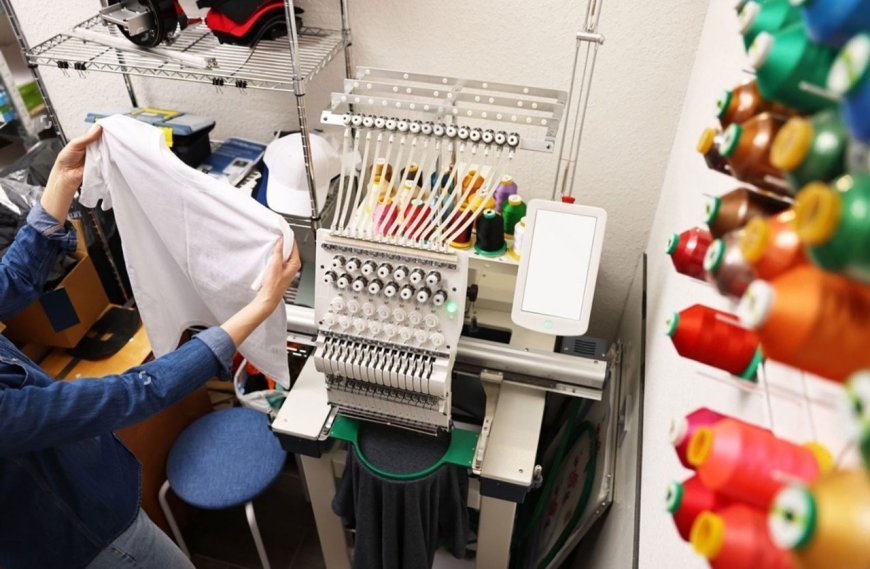DST Digitizing Decoded: The Professional's Guide to Flawless Stitch-Outs

You've seen it before: a design that looks perfect on screen stitches out with puckered fabric, broken threads, or distorted shapes. For anyone running an embroidery business or serious about their craft, these failures aren't just frustrating—they're costly. They waste time, thread, and expensive materials. The root of the problem almost always lies in the digital instructions given to the machine. This is where mastering DST Digitizing separates amateurs from professionals. It's the crucial process of creating a DST file, the universal embroidery format understood by Tajima and most other commercial machines, that contains every command needed for a perfect stitch-out.
A DST file is more than just a design; it's a precise blueprint that dictates the needle's path, stitch type, trim commands, and color changes. Flawless embroidery doesn't happen by accident. It's the direct result of skillful digitizing that anticipates how thread and fabric will interact. This guide will decode the professional principles and techniques behind creating DST files that produce consistent, high-quality results, helping you eliminate errors and elevate your work to a professional standard.
What is DST Digitizing? Beyond the Basic Conversion
Many beginners think digitizing is simply using an auto-convert tool to turn a JPG into an embroidery file. For professionals, it's a much deeper craft. DST digitizing is the manual process of translating artwork into a structured sequence of commands that an embroidery machine can execute with precision.
A professional digitizer doesn't just trace an image; they engineer it. They make countless critical decisions about:
-
Stitch Type: Choosing between satin, fill, and run stitches for each element.
-
Stitch Direction: Mapping the angle of stitches to ensure coverage, prevent puckering, and create visual texture.
-
Density: Determining how many stitches to pack into an area—too few shows fabric, too many causes stiffness and distortion.
-
Underlay: Creating a foundation of stitches to stabilize the fabric and help top stitches lie smoothly.
-
Sequence: Planning the order of sewing to minimize jumps and trims, reducing runtime and thread breaks.
The Professional's Toolkit: Software for Flawless DST Files
While talent is key, professionals rely on advanced software to implement their vision. Auto-digitizing features won't cut it for complex designs. Here’s what the pros use:
-
Wilcom ES: The industry standard for large-scale operations. It offers unparalleled control, advanced features for complex stitch effects, and powerful editing tools for perfecting any design.
-
Hatch by Wilcom: Brings much of Wilcom's power to a more user-friendly and affordable package. Its tiered system allows embroiderers to grow into the software, making it a favorite among small businesses and serious hobbyists.
-
PulseID: Another premium choice known for its superior tools for lettering and chenille effects, favored by many professional digitizers.
-
Embrilliance: Known for its modular approach, allowing users to buy specific functionality. Its StitchArtist module is a powerful digitizing platform in its own right.
These programs provide the necessary control over every stitch parameter, allowing a digitizer to optimize the design for the specific target fabric and machine.
Key Principles for Flawless DST Digitizing
1. Master the Underlay
The underlay is the hidden foundation of your design, and ignoring it is the fastest route to a failed stitch-out. A professional never skips it. Underlay serves several critical functions:
-
Stabilization: It anchors the fabric to the backing, preventing shifting and puckering during the stitching of the top layers.
-
Surface Leveling: It creates a smooth, consistent surface on uneven fabrics like towels or fleece.
-
Push/Pull Compensation: It helps counteract the natural push and pull of the stitches that can cause design distortion.
Use different underlay types for different jobs: zigzag for stability, edge run for outlining shapes, and center run for fill areas.
2. Control Stitch Density and Direction
Density and direction are the two most powerful tools for controlling the look and feel of your embroidery.
-
Density: This refers to the distance between stitches. A common beginner mistake is using excessive density, which makes the design stiff and causes puckering. Professionals use the minimum density needed for good coverage, which varies based on the thread weight and fabric type. For example, a design for stretchy jersey will have a lower density than one for a sturdy canvas bag.
-
Direction: The angle of your stitches dramatically affects the final appearance. Changing stitch direction in adjacent areas can create visual interest and depth. However, always be mindful of how direction interacts with fabric grain; stitches running parallel to the weave can sometimes cause more distortion.
3. Strategize Your Stitch Sequence
The order in which you sew the elements of your design is not arbitrary. A logical sequence minimizes jumps, trims, and color changes, leading to a faster, cleaner stitch-out. The general rule is to stitch from the bottom up:
-
Start with underlay for all elements.
-
Stitch the largest background fill areas.
-
Move to smaller foreground elements.
-
Finish with details and outlines.
This order embeds layers underneath others, creating dimension and preventing the top layer from being swallowed by a larger area stitched after it.
4. Understand Pull Compensation
Fabric is not static; it moves and stretches as the needle punches through it. This can cause gaps between adjacent sections of satin stitches or distortion in filled areas. Pull compensation is a software setting that intentionally oversizes or undersizes elements to anticipate and counteract this movement. It requires practice and testing to master but is essential for achieving precise registration—where all elements of the design align perfectly.
5. Choose the Right Stitch Type
A professional knows which stitch to use and why:
-
Satin Stitches: Used for outlines, details, and lettering. The stitch length must be controlled to prevent snagging.
-
Fill Stitches: Used for covering large areas. The digitizer can adjust the angle, density, and pattern (e.g., tatami, motif) to achieve different textures.
-
Run Stitches: Used for fine details, single-line elements, and creating a "hand-stitched" look.
The Non-Negotiable Step: Test and Refine
A professional digitizer never assumes a design is perfect on the first try. The final and most crucial step is the test stitch-out.
-
Hoop Up Scrap Fabric: Use the exact same fabric and stabilizer combination you plan to use for the final product.
-
Stitch and Observe: Watch the machine run. Listen for strain and note any excessive jumps or trims.
-
Analyze the Result: Examine the stitch-out for registration issues, puckering, poor coverage, or thread breaks.
-
Go Back and Edit: Use your analysis to fine-tune the digital file. Adjust the density, modify the underlay, or tweak the pull compensation.
-
Repeat: This iterative process of stitching, analyzing, and editing is what ultimately leads to a flawless DST file.
Conclusion: Digitizing is a Craft, Not a Button
Flawless stitch-outs are the direct result of intentional, skilled DST digitizing. It's a craft that combines technical knowledge of software with an artistic understanding of thread and fabric. There are no true shortcuts. By moving beyond auto-conversion and embracing the principles of underlay, density, sequencing, and pull compensation, you transform from someone who just runs a machine into a true embroidery professional.
Mastering these skills requires patience and practice, but the payoff is immense: consistent, high-quality results, reduced waste, and a reputation for reliability. Embrace the process, invest in your skills, and watch as your embroidery becomes consistently flawless.
What's Your Reaction?



























































